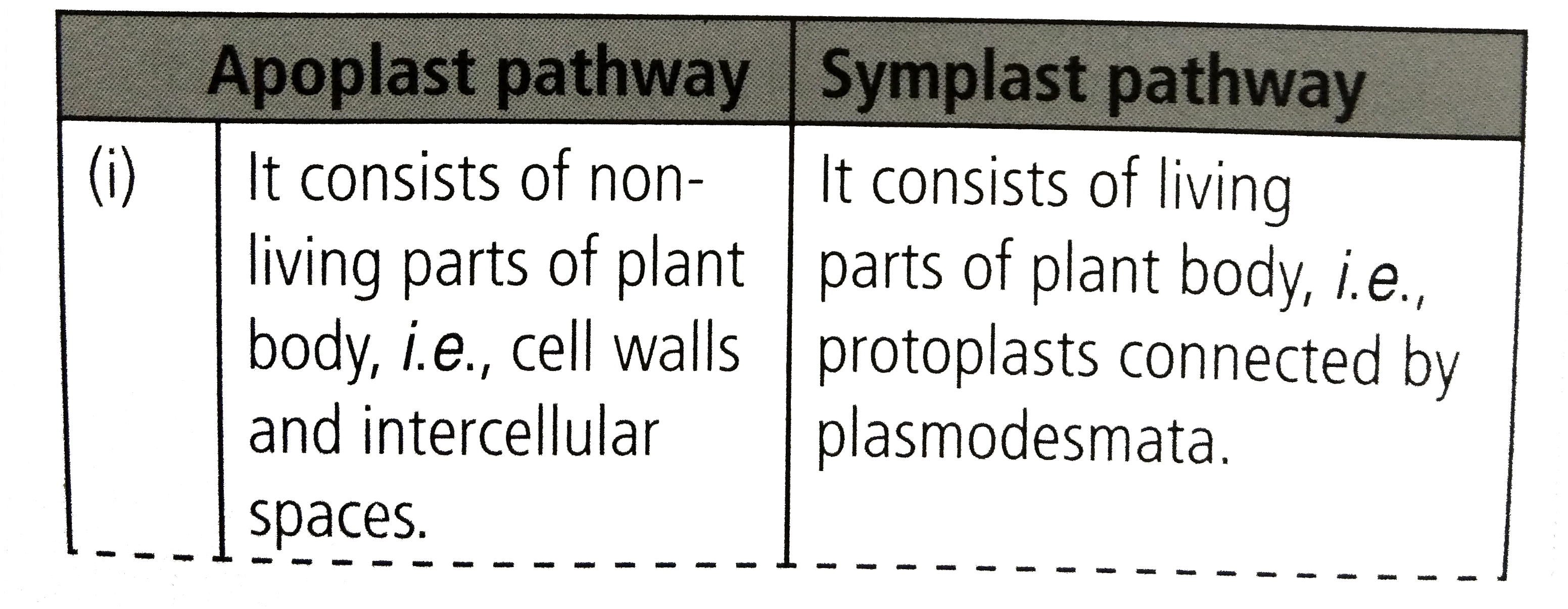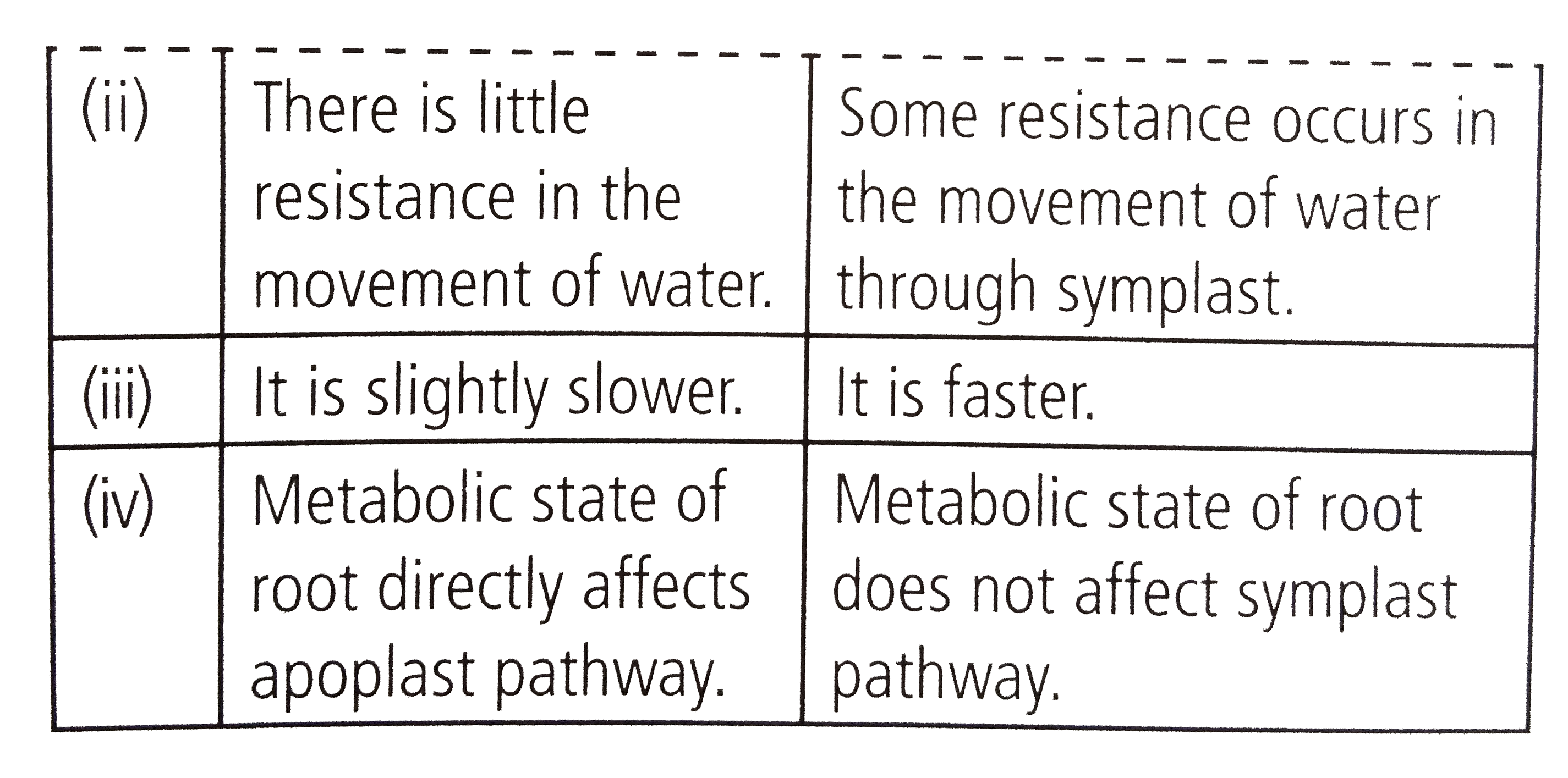The primary difference between the apoplast and the symplast is that the -
apoplast is non-living spaces and cell walls
apoplast relies on active transport
symplast is nonliving spaces and cell wall
apoplast prevents passive diffusion
The correct Answer is:A
Step-by-Step Solution:
1. Define Apoplast and Symplast:
- The apoplast refers to the non-living parts of the plant, which include the cell walls and intercellular spaces. It allows for the movement of water and solutes through these spaces without crossing any cell membranes.
- The symplast, on the other hand, consists of the living components of the plant, specifically the cytoplasm of the cells connected by plasmodesmata (small channels that connect the cytoplasm of adjacent cells).
2. Identify the Primary Difference:
- The primary difference between apoplast and symplast is that the apoplast is made up of non-living components (cell walls and intercellular spaces), while the symplast is composed of living components (cytoplasm of cells).
3. Transport Mechanisms:
- In the apoplast pathway, the movement of water and solutes occurs primarily through passive transport, as it does not require energy to move through the non-living spaces.
- In contrast, the symplastic pathway involves active transport mechanisms, as it requires energy to move substances through living cells.
4. Movement Characteristics:
- The apoplastic movement is generally faster due to the lack of barriers (dead cell walls) and the presence of larger intercellular spaces.
- Symplastic movement is slower because it involves the transport of substances through living cells, which may have more restrictions due to cell membranes.
5. Conclusion:
- Thus, the primary difference between apoplast and symplast is that the apoplast consists of non-living spaces (cell walls and intercellular spaces), while the symplast consists of living components (cytoplasm of cells).
- The apoplast refers to the non-living parts of the plant, which include the cell walls and intercellular spaces. It allows for the movement of water and solutes through these spaces without crossing any cell membranes.
- The symplast, on the other hand, consists of the living components of the plant, specifically the cytoplasm of the cells connected by plasmodesmata (small channels that connect the cytoplasm of adjacent cells).
- The primary difference between apoplast and symplast is that the apoplast is made up of non-living components (cell walls and intercellular spaces), while the symplast is composed of living components (cytoplasm of cells).
- In the apoplast pathway, the movement of water and solutes occurs primarily through passive transport, as it does not require energy to move through the non-living spaces.
- In contrast, the symplastic pathway involves active transport mechanisms, as it requires energy to move substances through living cells.
- The apoplastic movement is generally faster due to the lack of barriers (dead cell walls) and the presence of larger intercellular spaces.
- Symplastic movement is slower because it involves the transport of substances through living cells, which may have more restrictions due to cell membranes.
- Thus, the primary difference between apoplast and symplast is that the apoplast consists of non-living spaces (cell walls and intercellular spaces), while the symplast consists of living components (cytoplasm of cells).
Similar Questions
Knowledge Check
Apoplast is
ACytoplasm and plasmalemmaBProtoplast and plasmodesmataCCell wallsDIntercellular space containg non-living matterTerms apoplast and symplast were first used by
AMunchBClarkCFisherDDixonFollowing are the differences between apoplast pathway and symplast pathway.

 A(iii)onlyB(i)and(iii)onlyC(iii)and(iv)onlyD(ii)and(iii)only
A(iii)onlyB(i)and(iii)onlyC(iii)and(iv)onlyD(ii)and(iii)only

